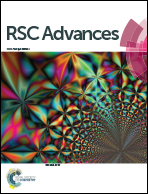Fate of silver nanoparticles in natural waters; integrative use of conventional and electrochemical analytical techniques†
Abstract
The rapid emergence of commercially available products containing silver nanoparticles (AgNPs) in recent years is worrying, as the widespread use of these items could lead to hazardous silver pollution to our environment waters. When released into the environment, AgNPs' toxicity and transport in water is ultimately dependent on its transformation. Therefore, the study on AgNPs' transformation in different aqueous environments is important in predicting the damage that will be incurred by the accumulation of AgNPs in natural waters. In this paper, we investigated the AgNPs speciation in three types of aqueous media (ultrapure water, lake water and seawater) after one week of dispersion using analytical techniques such as inductively coupled plasma mass spectrometry (ICP-MS), and X-ray photoelectron spectroscopy (XPS). The amount of Ag ions measured in the AgNPs–seawater suspension was found to be one order of magnitude higher than the amount measured in the AgNPs–ultrapure water suspension, hence indicating that the extent of transformation of Ag0 to ionic Ag in AgNPs is very different. Furthermore, the data acquired from XPS analysis showed that the metallic state of silver prevailed after dispersion in all three types of water, suggesting that the AgNPs did not undergo any reactions that resulted in the formation of silver containing compounds. Cyclic voltammetry (CV) was also performed for the study of the transformation of AgNPs. The trend gathered from the magnitudes of the AgNPs oxidation peak (0.52 μA, 12.2 μA and 49.2 μA for AgNPs–seawater, AgNPs–lake water and AgNPs–ultrapure water suspensions respectively) exhibited a positive relationship with that attained from the ICP-MS and XPS results, demonstrating the likelihood of employing this technique as a simple and rapid alternative in future work in this field.


 Please wait while we load your content...
Please wait while we load your content...